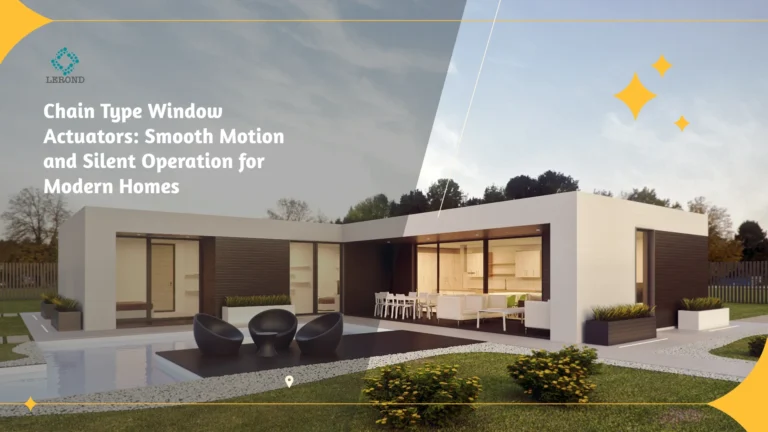How to Choose Between Wired and Wireless Smart Home Systems: A Comprehensive Guide
When it comes to choosing a smart home system, one of the most common decisions is whether to opt for a wired or wireless solution. Both options have their unique advantages, and understanding these differences can help you make a more informed choice for your home or business. In this post, we will explore the key factors you need to consider when deciding between wired and wireless systems, and explain why LEROND’s wireless solutions offer exceptional value for your smart home needs.
Wired vs. Wireless: What’s the Difference?
Wired Smart Home Systems:
- Reliability & Stability: Wired systems typically offer higher stability and reliability because they’re not dependent on a wireless signal. With direct connections via cables, they are less susceptible to interference from other devices or environmental factors.
- Speed & Bandwidth: For high-performance applications, such as high-definition video surveillance or large data transfer, wired systems can offer superior speed and bandwidth.
- Installation Complexity: The primary drawback of wired systems is the complexity of installation. They often require professional installation, especially in existing buildings where running cables through walls, floors, or ceilings can be disruptive and costly.
- Long-Term Durability: Once installed, wired systems can be very durable with minimal maintenance. They don’t rely on batteries or wireless signals, which means there’s less to worry about in terms of upkeep.
Popular Wired Solutions:
- KNX: A leading standard for home and building automation, KNX provides a robust and reliable solution for wired control systems. It’s ideal for large-scale installations where reliability and customizability are key.
- PLC (Power Line Communication): Uses existing electrical wiring to transmit data. While it simplifies installation, PLC systems can suffer from interference or reduced speed over long distances or noisy electrical environments.
Wireless Smart Home Systems:
- Flexibility & Scalability: Wireless systems are much easier to install and are highly scalable. Whether you’re adding new devices or expanding the system, wireless technology makes it simple to increase coverage without needing additional wiring or drilling.
- Installation & Cost Efficiency: The lack of wiring means wireless systems are usually more cost-effective and quicker to install. You can set up most wireless devices yourself without the need for professional help.
- Interference Risks: Wireless systems rely on radio signals, which can be affected by interference from other devices like microwaves, thick walls, or even other networks. While this is rarely an issue for most home applications, it can occasionally impact performance, especially with a larger number of devices.
- Battery Life & Maintenance: Many wireless devices operate on batteries, which means they require regular replacements or recharging. However, newer wireless devices are becoming increasingly energy-efficient, with longer battery life.
Popular Wireless Solutions:
- Wi-Fi: Widely used for smart home devices like cameras, lights, and thermostats. However, it can become overloaded with multiple devices and might not always provide the best range or reliability.
- Zigbee & Z-Wave: These protocols are often used for devices requiring low-power, long-range connectivity. They are commonly used in lighting, door/window sensors, and locks. These are well-suited for home automation and can support many devices in a single network.
- Bluetooth Low Energy (BLE): Ideal for proximity-based applications, BLE is popular for smart locks, speakers, and other low-power, short-range devices.
- Tuya Smart: At LEROND, we utilize Tuya’s platform, one of the leading ecosystems for building wireless smart home solutions. Tuya’s extensive ecosystem supports a wide range of devices across multiple protocols, ensuring easy integration and future-proof compatibility for your smart home needs.
So, Which Should You Choose?
It all comes down to your specific needs:
- If you prioritize reliability and are willing to invest in a more complex, professional installation, a wired system may be the right choice for you.
- If you want flexibility, cost-effectiveness, and the ability to easily expand your system, then a wireless system might be a better fit.
Why Choose LEROND’s Wireless Solutions?
At LEROND, we specialize in providing smart home solutions that offer the best of both worlds: reliability, flexibility, and ease of use. Our wireless systems utilize the Tuya Smart ecosystem, ensuring a seamless, efficient, and highly scalable experience for our customers. Here’s how LEROND’s wireless solutions stand out:
- Tuya’s Advanced Wireless Protocols: Our solutions are built on Tuya’s robust ecosystem, which supports Wi-Fi, Zigbee, and Bluetooth devices. This enables our customers to enjoy long-range connectivity, minimal interference, and compatibility with a wide range of smart devices.
- Future-Proof Design: We embrace the latest standards and technologies, such as Matter, to ensure compatibility with a wide range of devices across platforms. Our wireless solutions are designed to adapt and grow with the evolving smart home ecosystem, giving you peace of mind that your system will stay up-to-date.
- Energy Efficiency & Sustainability: Our devices are engineered to be energy-efficient, with many offering low-power operation modes that extend battery life, helping to minimize ongoing maintenance costs and environmental impact.
- Easy Installation & Expansion: LEROND’s wireless systems are quick and simple to install—no need for rewiring or drilling. Whether you’re setting up a single room or a multi-room smart home, our solutions offer easy scalability, giving you complete control over the process.
- Dedicated Support & Empowerment: When you choose LEROND, you’re not just buying products—you’re gaining a partner. Our team is committed to supporting you throughout the installation, configuration, and maintenance phases, ensuring you get the most out of your smart home investment.
Conclusion:
Choosing between wired and wireless smart home systems comes down to your priorities—whether that’s reliability, cost, ease of installation, or future expansion. With LEROND’s wireless smart home solutions, powered by the Tuya ecosystem, you can enjoy the benefits of cutting-edge technology that’s flexible, efficient, and designed to grow with your needs.
Ready to make the switch to a smarter, more connected home? Reach out to us today to discover how our wireless solutions can empower your home or business.




